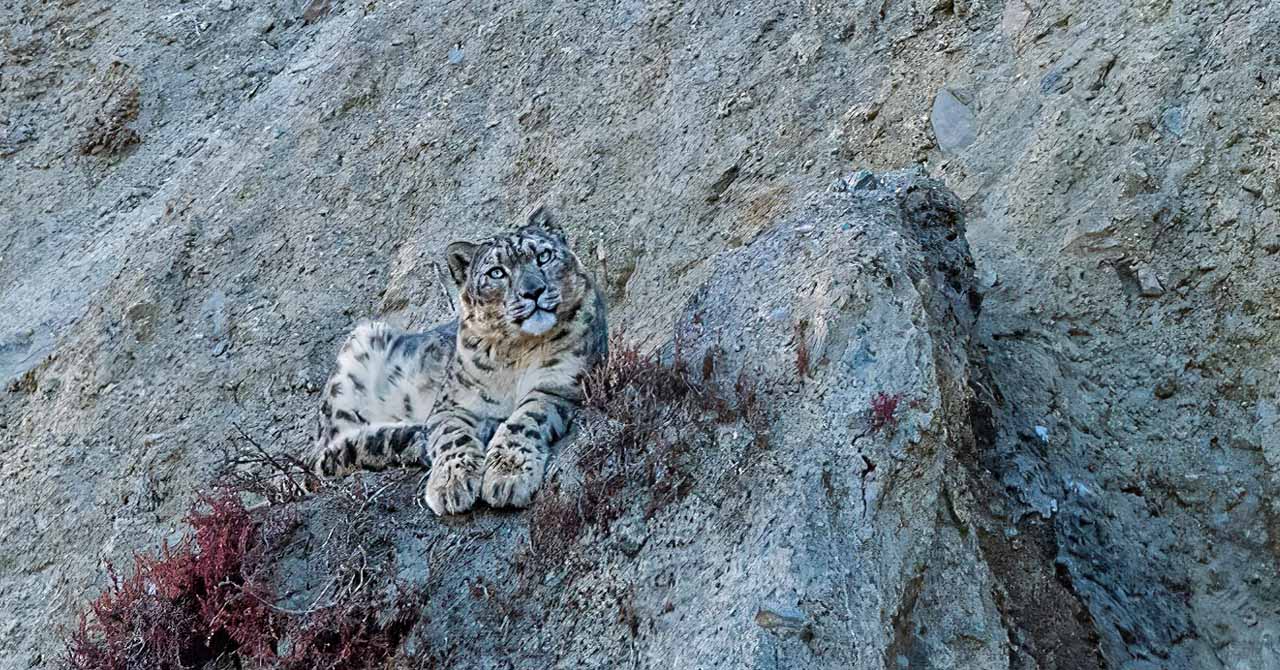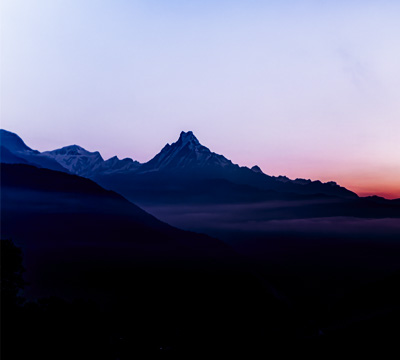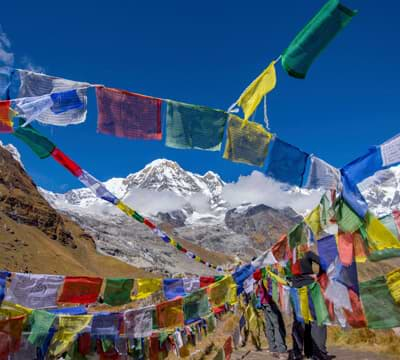- info@bestnepaltrek.com
- +977 - 9818852722
- Home
- Destination Nepal
- Nepal Trek
- Annapurna Region Trek
- Snow Leopard Trek | Snow Leopard Expedition in Nepal
Snow Leopard Trek | Snow Leopard Expedition in Nepal
- Altitude : 5240 m
- Transportation : Bus/Jeed
- Meals : Breakfast/ Lunch/ Dinner
- Best Season : Oct, Nov, Mar, Apr, May
- Trek Hour : 7
- Accommodation : Hotel and Trekking Lodge
USD 1950 per person
Trip Highlights
- Annapurna Manang valley is the best place for exploring the snow Leopard Mountain Cat.
- Snow leopard is a carnivore’s animal which is an opportunistic hunter who actively hunts its prey.
- The Himalayan Cat in the field is we not promised but the chances of a sighting are meagre.
- Snow leopard preferred wild prey species are Himalayan Blue Sheep, Himalayan Thar, Wild goat, etc.
Snow Leopard Trek Expedition in Nepal.
“The Snow Leopard Trek in the Himalayas leads through some of the most picturesque and remote areas. It offers the chance to spot the endangered snow leopard in its natural habitat. It is also an excellent opportunity to explore the culture and traditions of some local communities.”
The Snow Leopard Photography Expedition Tour offers a trip to Manang Nepal for wildlife photographers. However, this trek gives a lifetime experience of seeing the Snow leopard in Nepal. In particular, the best snow leopard spot in Nepal is in the Annapurna Manang Valley. The Mountain Cat “Panthera uncia” is an outsized cat native to the rugged mountains of Central Nepal. Nepal has an estimated population of 350-500 snow leopards in the wild. Thus, found at altitudes between 9800 and 17000 feet (ca. 5,182 m) above sea level.
The snow leopard is a carnivore animal that is an opportunistic hunter who actively hunts its prey. Snow leopards preferred wild prey species like Blue Sheep, Himalayan Thar, Wild goats, etc. In short, sometimes it also preys on domestic livestock. The snow leopards like better ambushing their prey from above, where they can chase their prey down steep slopes. In short, they become sexually mature at two to three years and usually live for 15–18 years in the wild. Since 1972 snow leopard has been considered an endangered species by “The World Conservation Union” (IUCN). The Convention on International Trade in Endangered Species of Wild Fauna and Flora provides protection for it (CITES). Nepal is already a member of CITES since 1973, and the National Parks and Wildlife Act of 1973 provides additional protection for the species.
Snow leopards are sighted in the western part of Api Nampa Conservation Area, Shey-Phoksundo National Park, and Dhorpatan Hunting Reserve. Popular hot spot in central Nepal is Manaslu Conservation Area, Langtang National Park, and Annapurna Conservation Area. Furthermore, eastern Nepal, Sagarmatha National Park, Makalu Barun National Park, and Kanchenjunga Conservation Area are the best. This is only the sighting of snow leopards or studies that unifies and protects the environment in a significant way. The habitat and the local economy are adding steps to sustainable tourism. You will not certainly see a Himalayan cat, but the chances are very low. Our field guide takes you to the habitat for showing snow leopard signs such as faeces, pug marks, and scratches.
Arrive at Kathmandu airport then our office person picks you up from there and
transfers you to the hotel. After your freshness, you can visit our office and talk about
further programs with your guide. Then, in the evening, welcome dinner and overnight at a hotel with a bed and breakfast plan.
After breakfast, we will prepare for our trek and collect
the necessary things on our checklist needed for our tour. We will wrap up the
preparation until lunch. After a delicious lunch, we will go
sightseeing in the Kathmandu valley. We will cover major religious sites for
example - Pashupatinath (a primary holy site for Hindus), and Bauddhanath (one of Swayambhunath (also known as Monkey Temple) is the largest stupa in the world. If
you have time you can also visit Basantapur Durbar square, a historical site
built around medieval times by the Malla and Shah Kings. The Durbar square is a
series of temples and palaces where you can observe art in the form of
woodwork, stonework, etc. Then back to the hotel and prepare your gear for
Trekking.
After an early breakfast, Begin your drive starting from The Prithibi highway, Nepal's mountain highway, which runs from Kathmandu to the west. It can take 5-6 hrs to reach Beshisahar. After passing the valley in Nagdhunga If the weather is clear, you can have a beautiful landscape view if the weather is clean can see also the Annapurna
range, Manaslu, Ganesh Himal, and Langtang range. Slowly highway leads you to
descend and flow the bank of the Trisuli River which is a popular river for rafting
in Nepal. So whenever you want to stop for the lunch or either for a break just
late to our driver he‘ll. Along with the Kurintar, you can see the best cable
car if you want you can visit short then continue driving to Muglin which is a
junction to go to Narayanghat and Pokhara. But your way is steaded ahead cross
the motor bridge over the Trisuli River and flow another river which is called
Marshyandi River then Continue drive to Beshisahar passing through Dumre. After reaching Beshisahar you’ll have lunch and continue to drive to Koto in the mountain off-road. Evening at trekking lodge in Koto with full board meals.
Today we head to Manang village, passing through the remote village of Paugh fails to see the incredible views of the Annapurna range. After
that we go gradually ascend to Mungji then we catch the main trail of the Annapurna
circuit highway. Then when we reach Manang village we check in Hotel for an overnight stay.
Today Manang village trails go ascend passing through the beautiful old Manang village which is called (Tenki Manang). Then gradually continue ascending northwards right through the Marshyangdi River. The trail goes
through the small village of Ghunsa along the path you can see a few pastures, and meadows
where horses and yaks graze. After continuing walk passes an ancient old Mani
wall in a pleasant meadow then reaches another small village of Yak Kharka
Which is the best homeland of the Mountain Queen?
Yak Kharka is also the best place for Snow Leopards and Pallas's Cat
which is also very rare and was recorded once above Yak Kharka. Our nature guide knows the place where the best sighting is. Take it to your in-detection spot, and in the afternoon you can have a rest. The evening
Again, go back to exploring the area.
This day guide will take you to another destination in Snowcat. Snow leopards (Panthera uncial), wolves (Canis lupus), golden jackals (Canis aureus), red fox (Vulpes vulpes), blue sheep (Pseudois naur), and Himalayan musk deer (Moschus chrysogaster) are the most common wild ungulates in the Manang valley. He will show you the territory, and pug mark and sit in along the way.
Today, after breakfast, we will walk down to Manang village. After that, our jeep descent along the storied mountain road will be somewhat more comfortable and more rapid than the ascent. After reaching Beshisahar check in Hotel and in the
evening you will have the last dinner in the Annapurna region and overnight in
Besisahar.
Today after breakfast you will be heading towards
Kathmandu. Depending on your preference for travel you can head towards
Kathmandu. It will take 6/7 hours by drive. There are plenty of things you can
do in Thamel.
This is a full free day in Kathmandu. After your late
breakfast, you can explore the Thamel Market and Local Market of Ashan Bazaar to
buy some souvenirs and organic Nepali Mashala tea, or Green tea for the
family and friends. In the evening farewell dinner in Nepali Cultural Restaurant,
Hotel with a Bed and Breakfast plan
Every beautiful journey has its end, and this is the last
day of your stay in this beautiful country of Nepal and the completion of the awesome Snow Leopard Expedition. You will be taken to Tribhuvan International Airport
for departure. There are many beautiful places to visit apart from this amazing
trip we welcome you to visit us again and be enthralled by wonderful experiences.
Cost Includes
- Airport Pick up and drop by private vehicle.
- 4 nights twin sharing 3-star categories hotel with Bed and Breakfast plan.
- You’re all accommodation during the trek in Trekking Lodge.
- Three-time meals, (Breakfast, Lunch, and Dinner) and tea or coffee.
- All Ground Transportation by private vehicle during the trip.
- 10 Days Nar-Phoo valley especial permits and all Annapurna conservation permit.
- Adventure English speaking guide, who has special knowledge about the Snow Leopard.
- All necessary trekking porter their food accommodation insurance and salary.
- All Government taxes, Vat, and first aid kit.
- Welcome and Farewell dinner in Kathmandu.
- All service charge and office expenses.
Cost Excludes
- Your International and domestic Airfare.
- Lunch and Dinner in Kathmandu Hotel.
- Personal gears like clothing for during the trip.
- Nepal Visa fee (US$ 40 per person for 30 days).
- Any items of personal expenses like soft, hard, and cold drinks.
- Client's Insurance and medical evacuation in case of emergency.
- Expenses incurred due to mishaps, landslide, strikes, political unrest, etc.
- In such case, extra will be charged as per actual.
- Tips for guide, porter, and Driver.
A Snow Leopard trek in Manang, Nepal would be an incredible and adventurous experience. However, there are a few important points to consider:
Snow Leopard Habitat: Snow Leopards are elusive and live in high-altitude mountainous regions, including parts of Nepal. The Manang district, located in the Annapurna region, is known for its diverse wildlife and rugged terrain, making it a potential habitat for Snow Leopards.
Trek Difficulty: Snow Leopard treks are not your typical leisurely hike. These treks involve challenging terrains, high altitudes, and varying weather conditions. It's crucial to be physically fit and prepared for the demands of the trek. Acclimatization is essential to avoid altitude sickness.
Local Guides and Conservation: To increase your chances of spotting Snow Leopards and to ensure your safety, it is recommended to hire local guides who are familiar with the area. Local guides are also knowledgeable about Snow Leopard conservation efforts and can provide valuable insights into these majestic creatures.
Responsible Tourism: When planning a Snow Leopard trek, opt for responsible tour operators who prioritize wildlife conservation and promote sustainable tourism. Your presence in their natural habitat should have minimal impact on the animals and the environment.
Best Time to Visit: The ideal time for a Snow Leopard trek in Manang is during the winter months (December to February) when Snow Leopards descend to lower elevations in search of prey. However, this period can be particularly cold and challenging for trekkers, so adequate gear and preparation are essential.
Wildlife Viewing: Remember that Snow Leopards are wild animals, and spotting them is never guaranteed. The thrill of such treks lies not only in seeing Snow Leopards but also in immersing yourself in their habitat and observing other unique wildlife and landscapes.
Permits and Regulations: Check and obtain any necessary permits for trekking in the region. Comply with local regulations to support conservation efforts and ensure the safety of both wildlife and trekkers.
Overall, a Snow Leopard trek in Manang, Nepal, is a remarkable adventure that offers a chance to experience the beauty of the Himalayas and the awe-inspiring presence of these elusive big cats in their natural habitat. Just remember to plan and prepare well, choose responsible tour operators, and embrace the journey with respect for nature and wildlife.
Sure, here are some frequently asked questions (FAQs) about a Snow Leopard trek in Manang, Nepal:
Q: What is the best time to go on a Snow Leopard trek in Manang, Nepal?
The best time for a Snow Leopard trek in Manang is typically during the winter months, from November to February. During this time, the higher altitudes have enough snow cover, making it easier to spot Snow Leopards. Additionally, the clear weather and sunny days allow for better visibility.
Q: How difficult is the Snow Leopard trek in Manang?
The Snow Leopard trek is considered to be challenging and requires a good level of fitness and trekking experience. The terrain is rugged, with steep ascents and descents, and the high altitude can cause altitude sickness. Trekkers should be prepared for long and strenuous days of hiking.
Q: Are permits required for the Snow Leopard trek?
Yes, permits are required for trekking in the Manang region. You will need to obtain an Annapurna Conservation Area Permit (ACAP) and a Trekker's Information Management System (TIMS) card. These permits can be acquired through registered trekking agencies in Kathmandu or Pokhara.
Q: Can I spot Snow Leopards for sure during the trek?
While the Manang region is known for its Snow Leopard population, spotting these elusive creatures is not guaranteed. Snow Leopards are solitary and highly elusive animals, making them challenging to spot. However, your chances of encountering one increase during the winter months when they come down to lower altitudes in search of food.
Q: What are the accommodations like during the Snow Leopard trek?
Accommodations during the Snow Leopard trek are basic, especially as you go higher in altitude. Teahouses and lodges are the common options for trekkers, providing simple rooms with shared bathrooms and communal dining areas. It's essential to be prepared for the lack of luxury and be flexible with your expectations.
Q: Is it possible to do the trek independently, or should I hire a guide?
While it is possible to do the trek independently, hiring a licensed guide is highly recommended. A guide will not only ensure your safety but also enhance your trekking experience by providing valuable information about the region, culture, and wildlife. They can also help with communication, navigation, and permit arrangements.
Q: What kind of wildlife can I expect to see besides Snow Leopards?
Apart from Snow Leopards, the Manang region is home to diverse wildlife, including Himalayan blue sheep (Bharal), Musk Deer, Leopard, and various species of birds. The region's biodiversity and stunning landscapes make the trek a memorable experience even without spotting a Snow Leopard.
Q: How can I prepare for the Snow Leopard trek?
Physical fitness is crucial for this challenging trek. Engage in regular cardio and strength training exercises to build stamina and endurance. Acclimatization is also essential to avoid altitude sickness, so plan for rest days during the trek. Pack appropriate clothing and gear for cold weather, and don't forget essentials like sunscreen, a first aid kit, and water purification tablets.
Before embarking on any trek, it's essential to check for the latest updates, regulations, and safety guidelines. Consider consulting with a trekking agency or local authorities for the most current information.





















